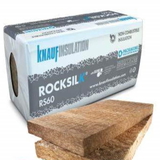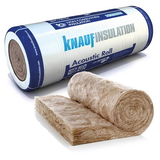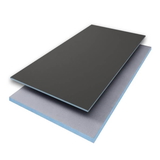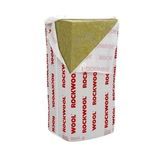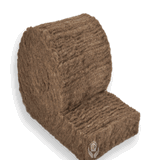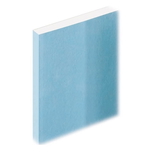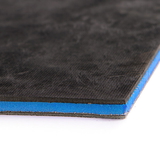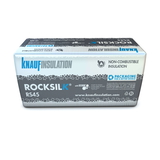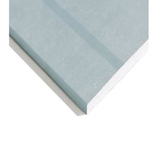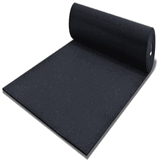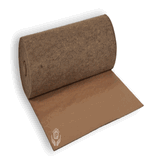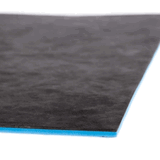- Blogs
- Soundproofing with insulation
Soundproofing with insulation
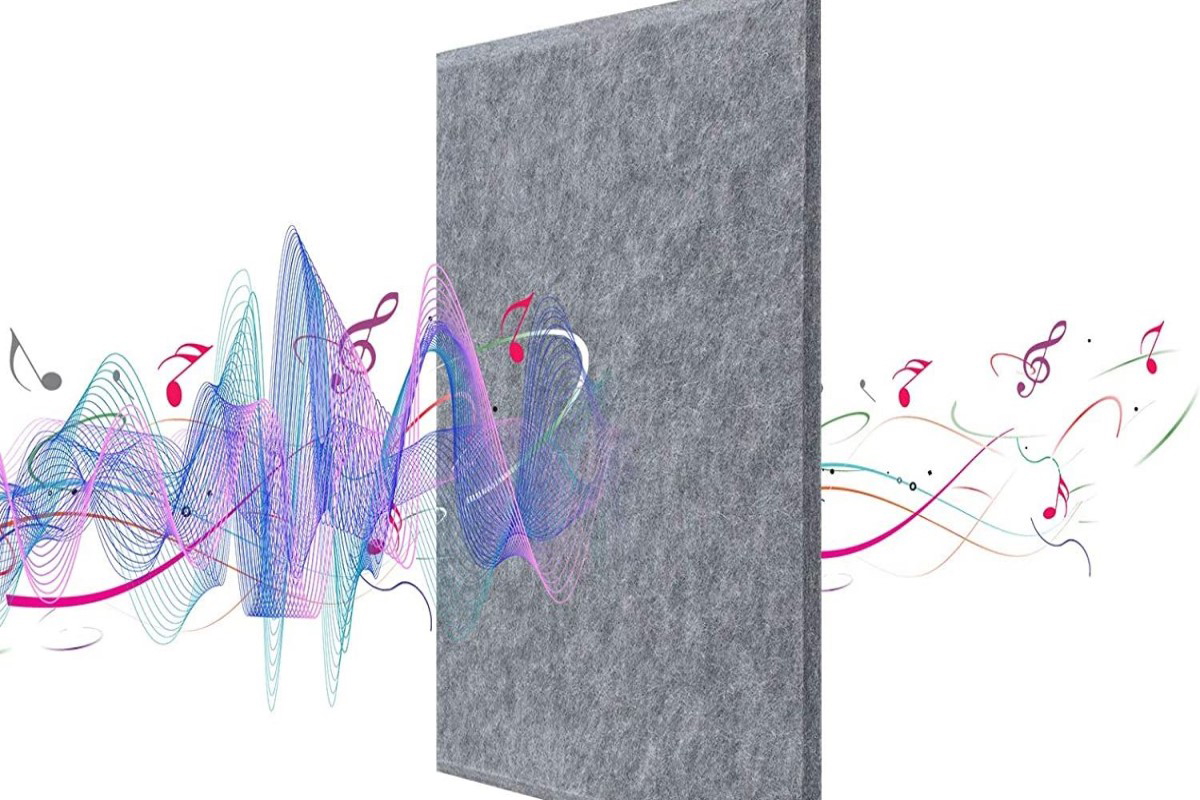
After a stressful day at work, all you want to do is come home and relax. But it isn't possible if the blaring sound of horns or the loud music from your neighbours’ sneaks inside your room. It is reasons like these that compel you to soundproof your home.
Soundproofing your home makes it quiet, calmer and more relaxing. It also enhances thermal comfort and improves your home value. Everyone likes a warm and quiet home! You can further increase your acoustic comfort by purchasing your insulation online and skipping the hassle of visiting your nearby store.
We will discuss more soundproofing, how sound is produced, how it travels, and the different types of sound insulation available in this blog.
How is the sound produced?
 When you strike the drum using sticks or sing, it creates vibrations. The louder you sing or play the drums, the stronger these vibrations are. These vibrations tend to move like waves in a medium. The movement of sound waves and their speed differ from one medium to another. Sound travels faster in gas and the slowest in the solid-state.
When you strike the drum using sticks or sing, it creates vibrations. The louder you sing or play the drums, the stronger these vibrations are. These vibrations tend to move like waves in a medium. The movement of sound waves and their speed differ from one medium to another. Sound travels faster in gas and the slowest in the solid-state.
The sound waves transport energy from the sound source, in this case, the drum or you, to the receiving end i.e., your eardrums. When vibrating air particles force your eardrum to vibrate, your ear detects sound waves. The bigger the vibrations detected, the louder is the sound perceived.
Are sound and noise different?
Noise is a form of sound that is often described as unwelcome, loud or unpleasant. While sound can be mild and comforting, anything we refer to as noise is usually unpleasant and loud.
Our ears are extremely good at detecting noise. Noise is typically an irritating tone that produces mild to severe discomfort or irritation.
What are the two basic types of noise?
Airborne noise:
Whenever a sound is produced, it moves in waves and reaches our ears through a given medium. When this medium is air, the said noise is called airborne noise. The sounds of animals, people talking, music, television and other airborne noises form a major portion of the sounds we hear every day.
Impact noise:
It is the sound produced when two or more objects strike. When the vibrations created, travel through liquid or solid states, it is impact noise. It can also travel through structures. The sound of footsteps, the sound of someone jumping on the floor above you, or water rushing through your pipes are all examples of impact noise.
Why soundproof your home?
Soundproofing is an effective way to reduce undesired, indirect sound waves like echoes and reverberations in your home. It can help keep conversations indoors and private.
Soundproofing your home will: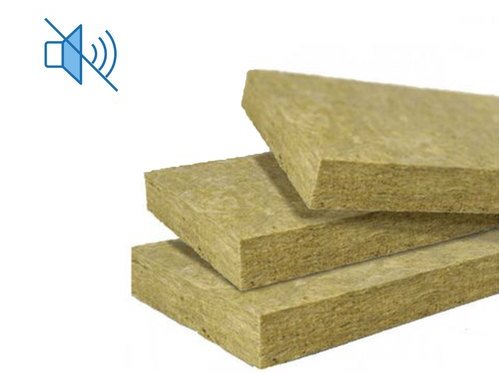
- Improve privacy.
- Keep the noisy neighbours out.
- Keep outdoor noise from sneaking indoors.
- Improve the quality of life.
- Improve your family's health and well-being
- Acoustic insulation products also give excellent thermal benefits.
- Increase your property value.
How does insulation block sound?
Sound travels in waves and insulation slows down these waves. It does not let the vibrations pass through easily. Insulation does not soundproof walls per se, but it reduces the amount of noise coming through the fabric and keeps your home warm. Insulation acts as a mass barrier. Mass effectively prevents noise transmission.
To achieve best in class different types of soundproofing materials are used together. Effective soundproofing is possible only when insulation can help reduce both impact and airborne noise in your home. The most commonly used fibreglass insulation and rock wool insulation also provides effective acoustic insulation.
Principles of soundproofing:
Before we discuss the types of soundproofing materials, we need to understand the basic principles of soundproofing:
1. Mass:
Sound travels very slowly in solid states. By adding mass or thick materials between the source of the sound and the receiving end, we can further reduce the speed of sound waves, thus reducing their energy.
Adding mass to the structure can effectively reduce airborne noise. It may not be as effective in reducing impact noise. Plasterboards, drywall applications, or using heavy drapes, thick glass windows can reduce airborne noise effectively in your facilities.
2. Sound absorption:
This principle revolves around restricting the movement of sound waves and preventing them from entering the room. Fibreglass, rock wool, acoustic boards and other materials effectively absorb sound. The open cell nature of the wool insulation absorbs or soaks up the acoustic energy that passes through it.
The mineral wool insulation used to insulate cavity walls effectively absorbs airborne noise and minimises additional resonance, reverberation, or amplification of sound waves. The sound waves can easily enter your house without cavity wall insulation.
3. Sound dampening:
Damping is the process of converting sound energy into heat energy. Sound dampening materials are applied in between two stiff panels, such as plywood or dry wood. When sound strikes it, shear forces between the panels cause tension in the damping layer, which causes the sound to subside and get converted to heat, a process known as thermal conversion.
This technique is most suitable for low-frequency noises. Rubber, caulk, and PVC are some of the most prevalent damping materials.
4. Decoupling:
It keeps the two sides of the structure from vibrating together, by separating them. This method interrupts or blocks the sound vibrations that go from one side to the other. It minimises sound transmission through the wall.
The use of acoustic brackets, acoustic hangers, or resilient channels, for example, can help create the gap between the drywall and the rest of the construction. Decoupling is usually done during the construction phase of a building.
Best materials for soundproofing:
Open-cell insulation like glass mineral wool and rock wool are best for soundproof walls, floor, roof, pipes and ducts. The wool insulation is available as rolls, slabs or acoustic insulation boards.
Acoustic insulation Slabs: At Buy Insulation Online, we store Acoustic insulation slabs from the UK's leading brands like Knauf and Rockwool. The standard mineral wool slabs fit perfectly into the stud walls, letting you relax in your home. The mineral wool insulation slabs are quite dense and efficiently absorb noise waves from the surrounding area. 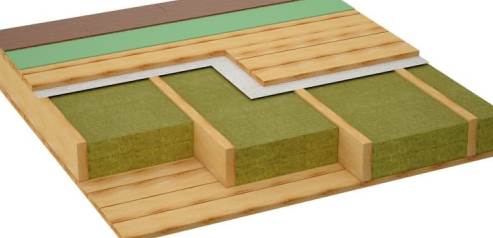
Acoustic insulation Rolls: Acoustic insulation rolls like APR from known brands like Superglass and Knauf are highly effective in reducing low-level noise. They are easy to install and are a good alternative when compared to acoustic insulation boards. The APR rolls are pre-cut to ensure minimum on-site wastage and quick installation.
Acoustic insulation Boards: To completely soundproof your wall, you can finish installing the mineral wool slabs or rolls with acoustic plasterboards. Due to their higher density, they are also used as a standalone. The high density ensures effective thermal and acoustic insulation in ceiling and wall linings. At Buy Insulation Online, we supply quality acoustic plasterboards from Knauf.
Acoustic insulation in ducts and pipes: Mineral wool duct wraps and duct slabs from Isover, Rockwool and Knauf effectively reduce the operational sounds of the ductwork. They make the workplace comfortable and improve productivity in personnel.
Foam pipe insulation and glass and rock wool pipe insulation from top brands like Armacell, K-Flex and Isover reduce the noise created by water moving in the pipes. Isover clim pipe insulation naturally dampens sound waves and provides sound insulation in wastewater pipes.
What thickness of acoustic insulation should I choose?
The appropriate thickness of acoustic insulation depends on its application. Soundproofing walls restrict the movement of airborne noise waves through a wall. Based on the depth of the stud wall, the thickness of sound insulation material is determined.
The acoustic insulation thickness you choose should not exceed the depth of the stud frame. Acoustic rock wool slabs have low compressive strength and do not squeeze between plasterboard sheets. Acoustic insulation slabs come in a variety of thicknesses, ranging from 25mm to 100mm.
The minimum thickness required for soundproofing floors with timber floor joists is 100mm. So, we recommend using 100mm sound insulation slabs between the joists on household floors that require sound insulation.
How to soundproof a wall?
Basically, there are two types of walls that need soundproofing. The first is the traditional solid party wall, made of bricks or blocks or the external wall. The second is an internal stud wall, which is generally made of a timber frame and plasterboard insulation. For properties with stud walls, higher amounts of soundproofing are usually required. Soundproofing a wall - external or internal is an easy DIY job, though the process of insulation may differ.
Sound insulation installation for walls:
Ensure you have all the things you need, like the safety equipment, resilient bars, mineral wool acoustic slabs or rolls and plasterboards in place before you can get started.
1. When soundproofing a stud wall, the first step is to inspect it for gaps or weak places and fill it up with an acoustic sealant.
2. The second step would be to build the stud framework. Stud walls can be made from metal or wood. 70-75mm thick studs are typically used for higher walls, while 50mm stud work is used for smaller walls.
3. Use acoustic mineral wool slabs or rolls to line the stud framework. The recommended density is 60kg/m3, and it's simple to cut with a sharp knife or a handsaw. Just place the acoustic roll directly on the wall, ensuring that it is securely tucked between the timber studs.
4. Apply a resilient layer to the face of the wall. The resilient bars or layer must then be installed across the timber stud, with the attaching flange on the bottom edge.
5. From floor to ceiling, you can fasten each bar at intervals of 600mm, basically because the plasterboard will eventually be screwed into the resilient bars, so marking the position of each bar on the next wall is a smart idea.
6. Add an acoustic plasterboard layer to this resilient layer, carefully placing them on the adhesives.
You can create a double layer of acoustic plasterboard by adding another layer of acoustic plasterboard.
Use an acoustic sealant to seal the perimeter. To finish, dry line or plaster the wall.
Soundproofing regulations in the UK:
The acoustic insulation requirements of residential buildings in the United Kingdom are explained in Part E of the Building Regulations 2010. The document was revised further in 2015. It covers soundproofing regulations for walls and floors as well as noise reduction measures inside bedrooms.
The Regulations, which apply to England and Wales, are divided into two parts:
- E1 examines noise protection from adjacent buildings, such as flats, terraces, and semis.
- E2 is concerned with sound transmission within the home.
In conclusion:
Effective sound insulation in your home helps increase comfort and keeps noise away. Acoustic insulation in pipes and ducts found in industrial facilities, ensure reduction in operational sound, resulting in increased productivity of personnel and quieter workplaces. We hope you gained some insights into soundproofing and acoustic insulation materials through this blog.
For top-quality acoustic insulation products, visit Buy Insulation Online. We offer mineral wool acoustic insulation rolls and slabs at competitive prices. Get free delivery on select postcodes and plant a tree for free on your order!

Samuel Hitch
Managing Director
Buy Insulation Online.
Leave A Reply
Your feedback is greatly appreciated, please comment on our content below. Your email address will not be published. Required fields are marked *
